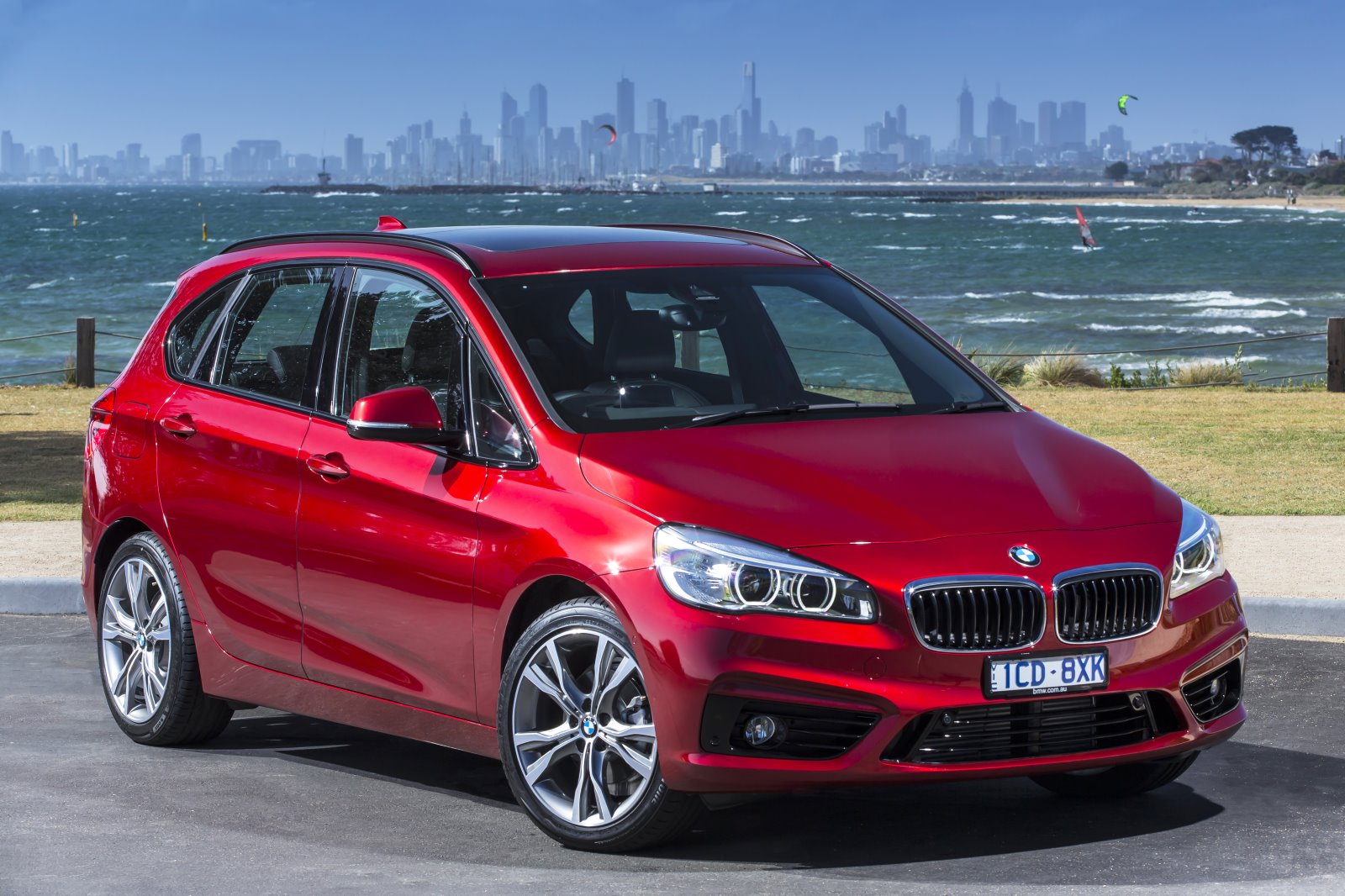
Jack Yan goes on the launch of the BMW 2-series Active Tourer, and answers just why the German marque sees fit to enter the compact monospace sector
photographed by the author and courtesy BMW
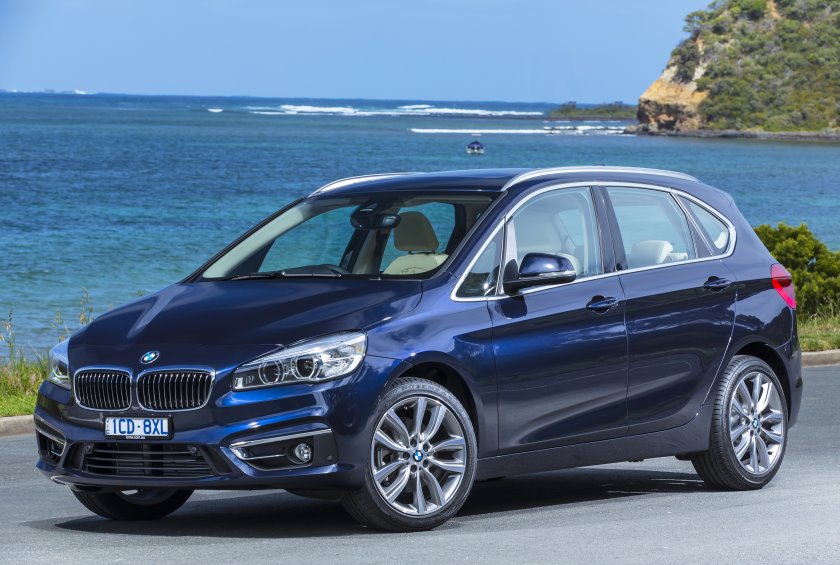
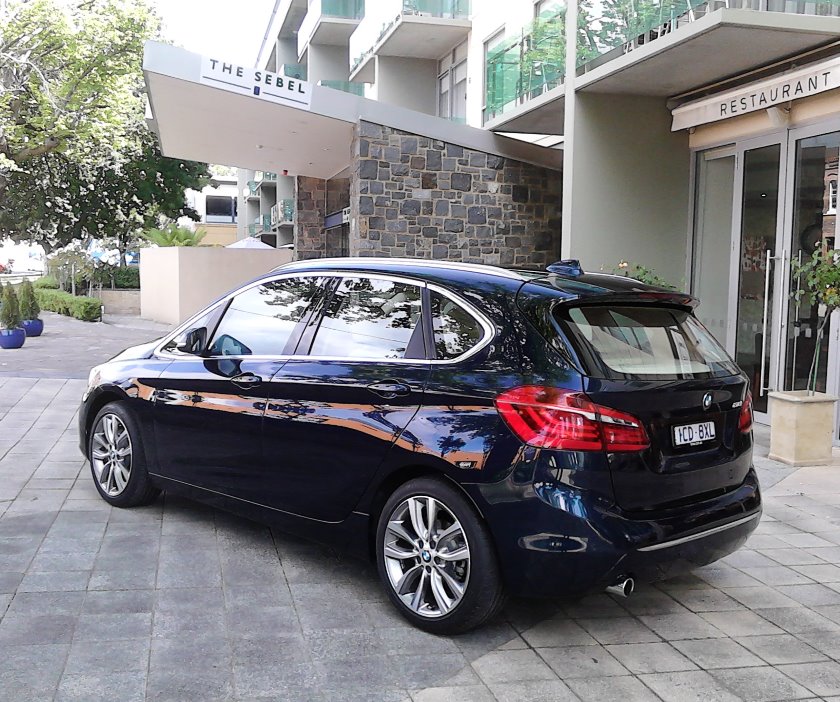
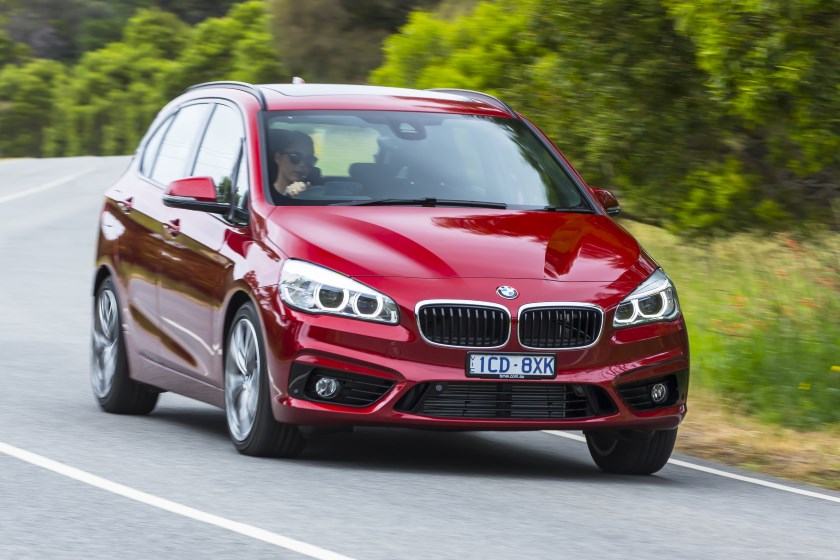
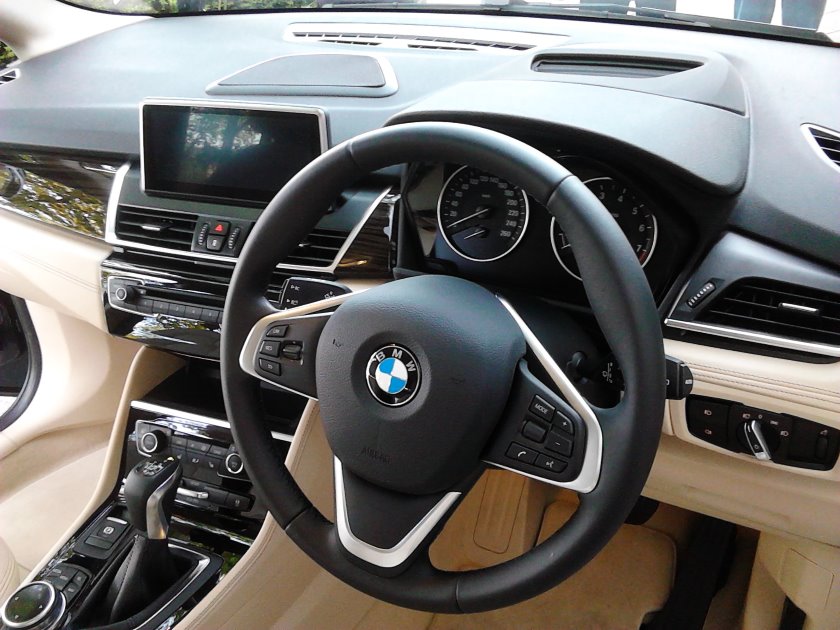
New concept BMW has created a smart-looking car for the active families of the 2010s
Jack Yan is publisher of Lucire.
At the dawn of the 1980s, when the western world was optimistically looking forward to a technologically driven future, car companies were beginning to put into place the ideas that had emerged in the wake of the fuel crises of the decade before. Through the 1970s there had been concerns ranging from peak oil and alternative fuels, to increased urbanization. The results ranged from more aerodynamic cars and a greater use of the more efficient front-wheel-drive packaging, to the New Zealand government implementing a fairly successful network of natural gas stations nationally and encouraging conversions from petrol to CNG and LPG, or, if you preferred, having dual-fuel cars that ran on petrol and natural gas. By the mid-’80s, the automotive landscape looked very different: cars were more efficient and sensible, they saved fuel through slippery shapes, and their packaging was cleverer, with more of the overall length devoted to passengers. It was a complete change from the 1970s, where extra sheetmetal heralded the American car at the start of the decade, where fussy shapes gave consumers the impression of novelty while hiding old running-gear, and where kitsch (manifesting as opera windows and fancy grilles) was acceptable.
In this thrust toward the future, the one-and-a-half-box car emerged: a vehicle that had the footprint of a regular saloon, but with and an engine bay so compact that it would barely intrude into the passenger cell, and a wheelbase so increased that it would accommodate up to seven people. The thinking had been around in the 1970s with ItalDesign’s Megagamma, based around the Lancia Gamma, while Ford had its even earlier Carousel concept that could have gone into production in 1975 had the 1973 fuel crisis not hit. These were tall wagons, but not so tall that they would not fit into a garage. By 1982, Nissan was the first to introduce its one-and-a-half-box car, the Prairie. It had sliding doors and no B-pillar, so it never felt structurally safe, but it was a clever concept: a car, wagon and van mixed together. The following year, Chrysler launched its T-115 models, the Dodge Caravan and Plymouth Voyager, and the word minivan emerged into the vernacular. Renault launched its Espace in 1984 with a similar concept.
At launch, these cars represented the future of motoring, marking the more efficient era. We would, some thought, be driving boxy, efficient cars come the dawn of the 21st century. But as petrol became more accessible again in the 1980s, the occident fell on old behaviours, fuelled (pun intended) by the oil companies. By 1996 New Zealand had given up its lead in hybrid cars, because CNG and LPG were no longer needed to the same degree. V8s came back into vogue, cars were about celebrating conspicuous consumption again, and the advance between, say, a 1992 Opel Vectra and a 2002 Opel Vectra became barely discernible other than in terms of fashion. Petrol looked as though it would remain cheap. Until it didn’t.
Of course, the sensibilities never really went away. The environmental movement continued to gain ground, while those who held on to the original dream of the World Wide Web got under way with creating car-sharing programmes. Technology could still solve problems, and Honda and Toyota launched hybrid cars: Honda’s Insight was an attractive coupé that looked like the personal vehicle of the future, while the Toyota Prius went from a dumpy three-box sedan and a wedge on wheels, signalling its high-tech intentions. The Hollywood set lapped up the second-generation Prius, with the likes of Leonardo di Caprio taking one instead of a limousine to the Oscars. It was their way of telling the world how responsible they were, eschewing the V8.
It was at this time that BMW, a company whose best known forays into front-wheel drive came courtesy of its former Rover subsidiary, called ‘the English patient’ in Germany, began looking at the next decade. Blue-sky thinking revealed that no car company could survive being a manufacturer of products: it would, logically, have to offer products and services. Car sharing would increase as technology improved. There would be increased urbanization, requiring more compact cars. Notably, and happily for a company that owned the Mini marque, the premium sector was growing. Just as importantly, the compact sector was growing.
Whereas BMW had dabbled in front-wheel-drive thinking before, it had managed to avoid it through the 1980s, 1990s and 2000s for its core range. ‘The Ultimate Driving Machine’ could not possibly be front-wheel-drive, so the thinking went, because enthusiasts would demand rear-wheel-drive. There was some logic to this: front-wheel-drive cars often had additional weight over the front, which meant that their dynamics would be affected, but since then Lotus and others have shown that it is possible to create spirited handlers with the power going to the front wheels only. BMW’s own Mini brand gave it plenty of intel on how to make a well balanced front-wheel-drive car.
In terms of styling, front-wheel-drive cars were also less attractive: Audi’s use of front-wheel drive in the 1980s led to cars that looked nose-heavy, with a great deal of metal in front of the front wheels. BMW and Mercedes-Benz, with their rear-wheel-drive models, were able to avoid that look, and society came to associate their proportions as being more “premium”.
But, again, advances in design, engineering and packaging have managed to hide a car’s proportions better than before. Coupled with the fact that 90 per cent of buyers do not care if their car is front- or rear-wheel-drive, the case for avoiding the more space-efficient layout, where everything is up front and the passenger space is left for people and their belongings, rather than a transmission tunnel, became less convincing.
The other predictions made by BMW—and, interestingly, by this publication around the same time—have come to pass. People have not abandoned their desire for luxury brands, even in a supposedly more caring era where corporate social responsibility has become mainstream. The print edition of Lucire itself has been founded on that notion, of accessible luxury. Fashion itself has reflected it, beginning with the Karl Lagerfeld for H&M collection that was launched in the mid-2000s. The fact the H&M “guest designer” collections have continued a decade later show that those new consumer trends of the period haven’t gone away.
BMW has further tapped in to the more technologically savvy mid-2010s, an era that reflects the technologically forward early 1980s, with its i sub-range of i3 and i8 electric cars, in a sector it dubs ‘Next Premium’, while its range of three-cylinder engines mirror consumers’ desire for fuel efficiency, the decade after sharp petrol price rises made life tougher for the public. Examining all these trends, now that they have recurred, meant that BMW could no longer avoid making its own front-wheel-drive, one-and-a-half-box, highly efficient car. It was time for the BMW 2-series Active Tourer.
The 2er Active Tourer is an attractive, front-wheel-drive, multi-purpose vehicle. The basic 218i and 218d models have turbocharged three-cylinder petrol and four-cylinder diesel engines respectively, while a 225i (not available in New Zealand) houses the range’s four-cylinder petrol unit. It seats five—a long-wheelbase, seven-seat Gran Tourer is mooted—and it looks exactly as you expect a BMW in this sector to look. There’s the kidney grille and the Hofmeister-Knick, the shape in the rear window which angles inward as you trace your finger down. There is a small window in front of the front door, helping mask the fact that the cabin has been pushed forward. The window line is fairly low, leading to an airy interior, something which we believe will be a growing trend as buyers move away from the high waistlines of the previous decade. As expected, BMW’s designers have hidden the overhang that mars the proportions of front-wheel-drive cars. A feature line in the lower half of the sides and the surfacing adds to the dynamism, tying it in to the saloons and sport cars.
We’ve become used to seeing these BMW design features in new niches over the years: people thought the 3-series Compact and the first X5 were oddly proportioned; nowadays the 1-series and the X SUVs are mainstream. The GT models have done the same. The Active Tourer seeks to follow, by altering our perceptions of how a BMW should be proportioned.
But if the BMW futurists were right, then we want space, practicality and premium in one package. Without the likes of the Volkswagen Golf Sportsvan and the Ford C-Max rivalling it in New Zealand, the dumpy Mercedes-Benz B-Klasse is its closest rival, with only the mainstream French brands and the Kia Carens giving it a challenge from below.
The drag coefficient is a commendable, if not class-leading, 0,26 (a figure which it shares with the Mercedes), making the Active Tourer particularly slippery—as you would expect a car to be in the efficient era of the mid-2010s.
BMW’s new engine family has that technological logic to it, too. The 1·5 three-cylinder kicks off the new range, and BMW’s plan is for a family that is correlated with 500 cm³ for each extra cylinder. Therefore, the four-cylinder engine has 2·0 litres, and a future six-cylinder will have 3·0. By sharing engines as much as possible within its range—and that includes its compact premium brand, Mini—BMW believes it can increase quality.
In all cases, the Twin Power turbocharging technology allays any fears that small capacities mean small power outputs. The 218i develops 100 kW, and the 218d another 10 kW, while the 225i has 170 kW on tap (to put it into perspective, that’s the same as the old Mazda RX-8). It also means that when you don’t need the power, the cars sip fuel, with a claimed 5·1 l/100 km for the 218i, and 4·3 l/100 km for the 218d. During our test, journalists’ heavy right feet ensured that we never saw those numbers; we would have to leave researching these figures to a more definitive, real-world test. Carbon dioxide emissions are 119 and 114 g/km for the two models.
Efficiency extends to how the cars are made: BMW has employed aluminium for the bonnet and chassis components. And while this is a practical, compact car for the urban buyers of today, BMW has employed a multi-link rear suspension for its trade-mark handling, and an electronic differential lock control to aid the chassis.
The seating position is not that different to the X1, already well established in the BMW range, while the second row of seats can fold electronically.
BMW has packed the Active Tourers with features for the demands of the modern premium buyer: lane departure warning, collision warning, pedestrian warning, parking assistant and high-beam assistant (where the car will automatically change to low beam when it detects oncoming traffic). The optional automatic tailgate, which the keyholder can open and close by moving one’s foot underneath the rear bumper, works a treat. Radar-based cruise control is optional. BMW Connected Drive sees a SIM card in every car, with the app able to make an emergency call if it detects the airbags have been deployed. There is an accident-proof telephone unit in the car that functions separately from one’s cellphone, and BMW’s specially trained personnel will give assistance and inform emergency services. This is a considerate car, giving peace of mind to the busy, urban motorist and families.
continued below
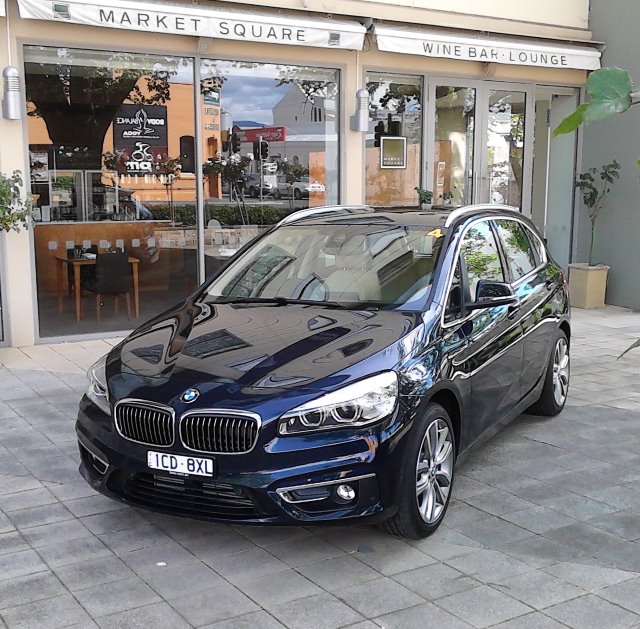
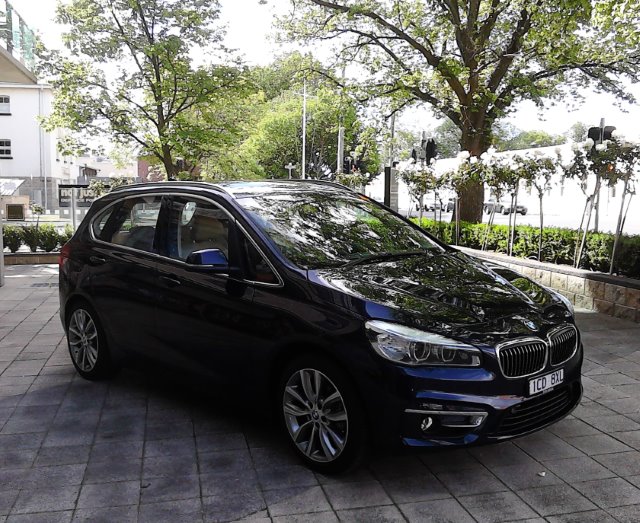
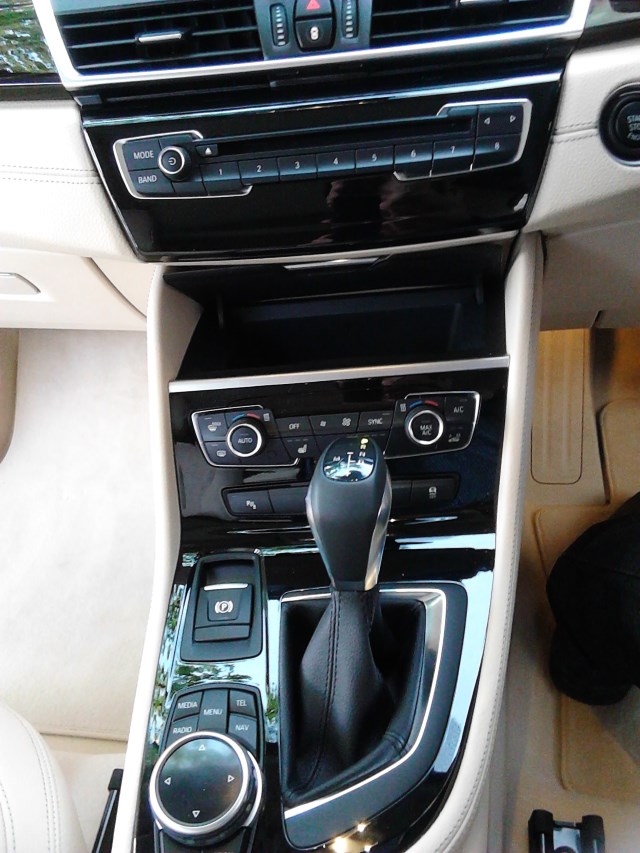

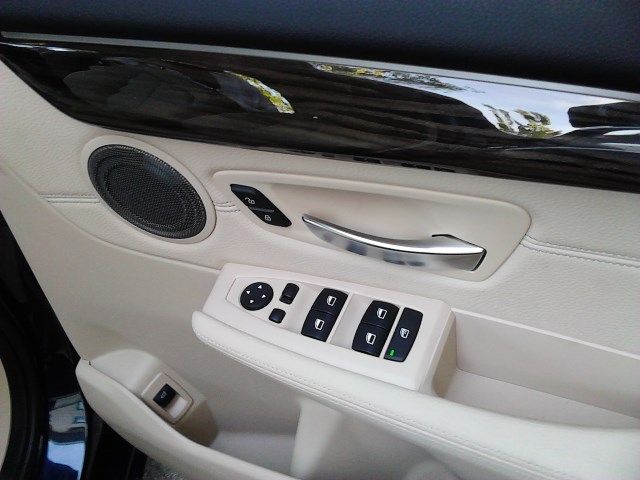
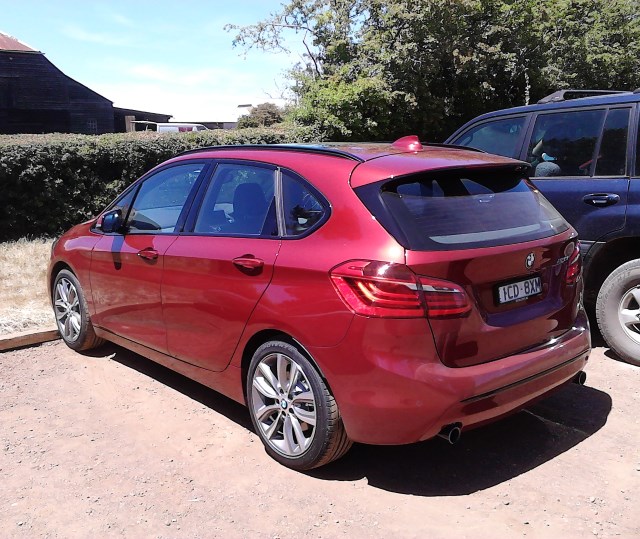
A smart package Inside and outside the BMW 2-series Active Tourer
Lucire sampled all the models on offer during the launch drive, with the standard, Sport Line and Luxury Line specs. In terms of seat comfort, there’s nothing between them, though the Luxury Line appointments made the Active Tourer feel more special. Contrasting interiors with beige or white features are very 2015, and we would prefer one that had black detailing offset with the beige interior. It might not be great if you get it dirty (and BMW does offer darker options, including black on black), but it contributes to the airy feel when you get behind the wheel. The centre console is different to other models, with space between the CD player and the climate control switches, while the gear lever looks sporty, wrapped in black leather, rather than the sculpted aluminium number seen in other models. The stitching in the interior gives off the air of BMW’s more exclusive, larger models.
Hitting the roads around Launceston, including some wonderful B-roads, the Active Tourer hits its stride. While BMW emphasizes the torque of its diesels, the 218i is our pick—and in New Zealand, where diesel models command a premium as well as higher running costs that offset the cheaper fuel, the petrol model makes more sense. The twin-turbo triple is a remarkable unit, with no lag, and and the torque is on tap at low revs: the 220 Nm is delivered at 1,250 rpm.
Not only are all Active Tourers remarkably composed, it is only at the limit where one can sense that it is front-wheel-drive. The steering is well weighted and responsive, where you can correct manœuvres quickly, and the Active Tourer feels more nimble than its shape suggests. The grip is excellent, and a hot hatch driver would be impressed even with the cars’ higher centre of gravity. We had no issues with the ride: BMW has managed to create a car, as it has done with the 3-series, that balances handling prowess with driving comfort.
The 218d, in fact, felt less torquey to us despite the on-paper claim of 330 Nm, with a more subdued engine note, but its eight-speed automatic shifts comfortably and we can foresee it getting close to the claimed fuel consumption figures. The 225i’s four-cylinder twin turbo unit is the pick of the three for those who demand hot-hatch power, but in city driving, there’s not much between the 218i and 225i. In fact, even if the larger-engined petrol model were sold here, we’d still recommend the 218i Active Tourer as a better balanced vehicle that does what is demanded of it.
BMW has priced the range keenly. The 218i Active Tourer retails for NZ$51,900, while the 218d Active Tourer jumps to NZ$62,900. For a premium, practical family car that fits with modern lifestyles, it’s the best we’ve sampled. It really combines the best of the saloons (with its handling and grip), with the roominess and the do-anything adaptability of the compact monospace class. You can go on holiday in this, or you can do the school run. And, if the mood takes you, go for a proper drive on the most challenging B-roads. It’s better than the B-Klasse, which is compromised by its less stellar dynamics, while its 1·6 four-cylinder unit is not as good an engine. The BMW 2er Active Tourer is the car of our times, an on-trend motoring expression of the Zeitgeist. •
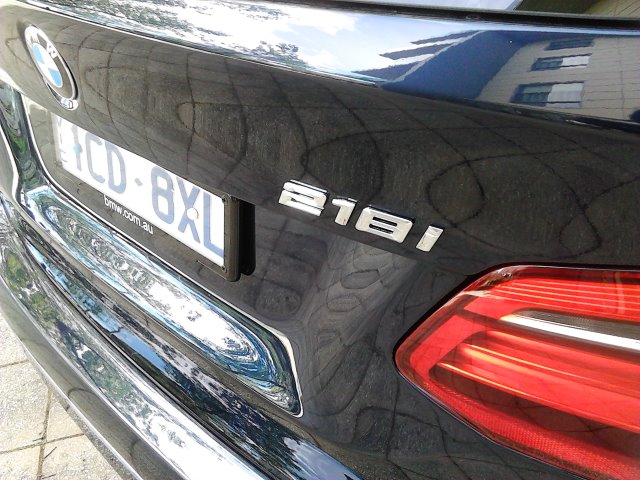
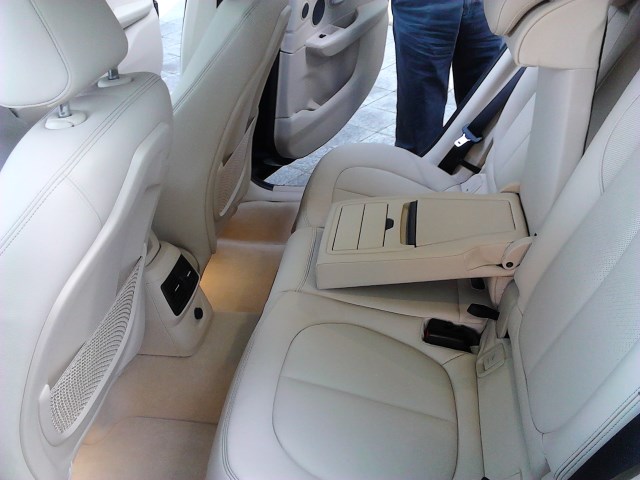
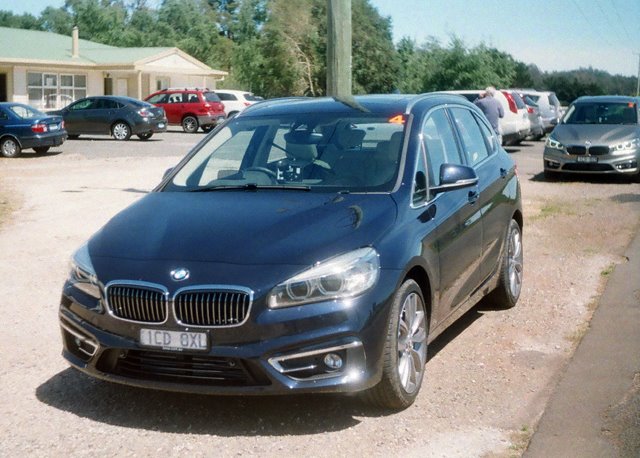
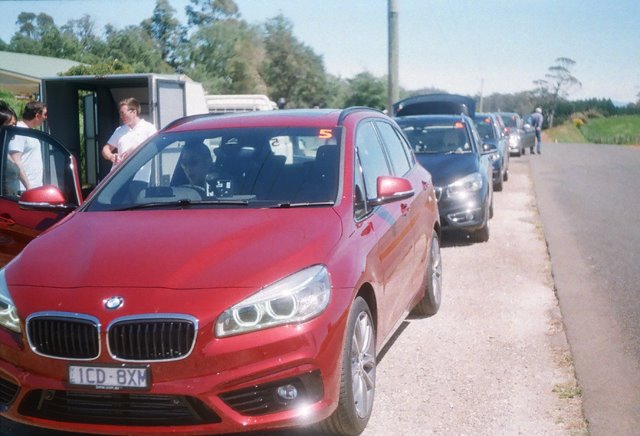
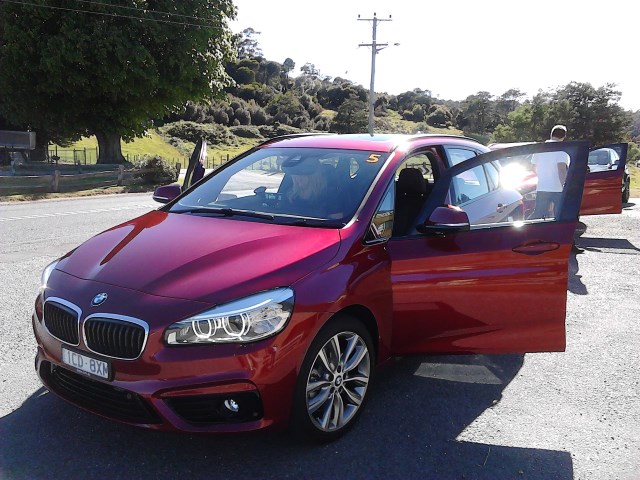
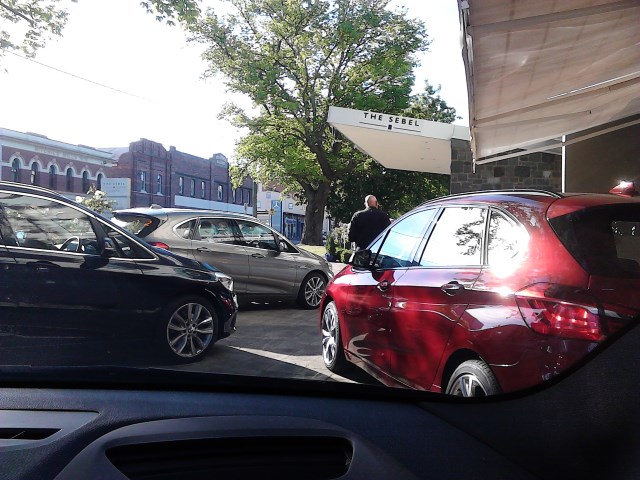
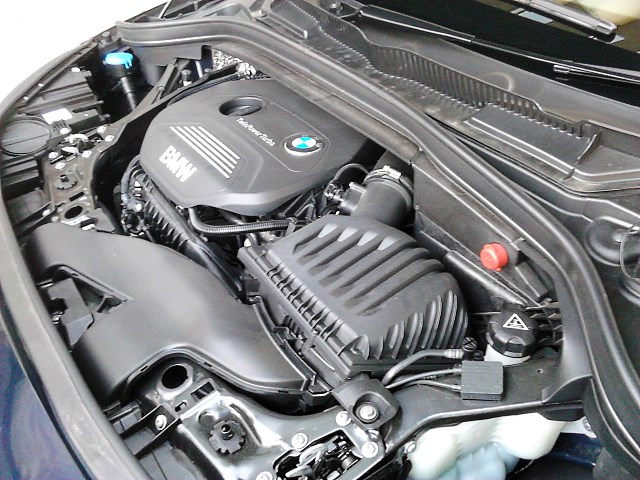
Sampling the lot Testing the BMW 218i, 218d and 225i Active Tourers
Related articles hand-picked by our editors
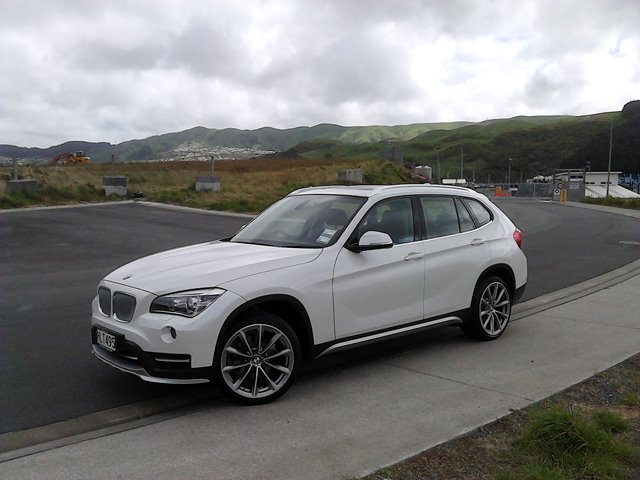
X and the city
Does an SUV without four-wheel drive make sense? Jack Yan looks at the BMW X1 Sdrive18d, and concludes that the German company understands us better than we would care to admit
photographed by the author
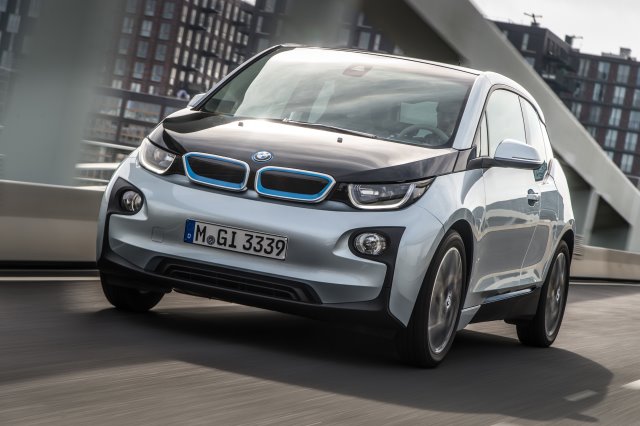
The revolution has arrived
Peter Jobes tests the BMW i3, unlocking its 170 hp electric motor, and finds it a pleasure to drive. The future is here
additional material by Jack Yan
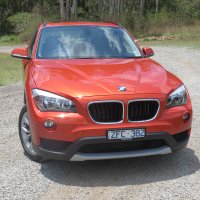 The adventurous lifestyle
The adventurous lifestyle
Sarah MacKenzie hops across the Tasman Sea to sample the refreshed 2013 BMW X1, an SUV ideal for the young adventurous couple
photographed by the author
Advertisement
Copyright ©1997–2022 by JY&A Media, part of Jack Yan & Associates. All rights reserved. JY&A terms and conditions and privacy policy apply to viewing this site. All prices in US dollars except where indicated. Contact us here.